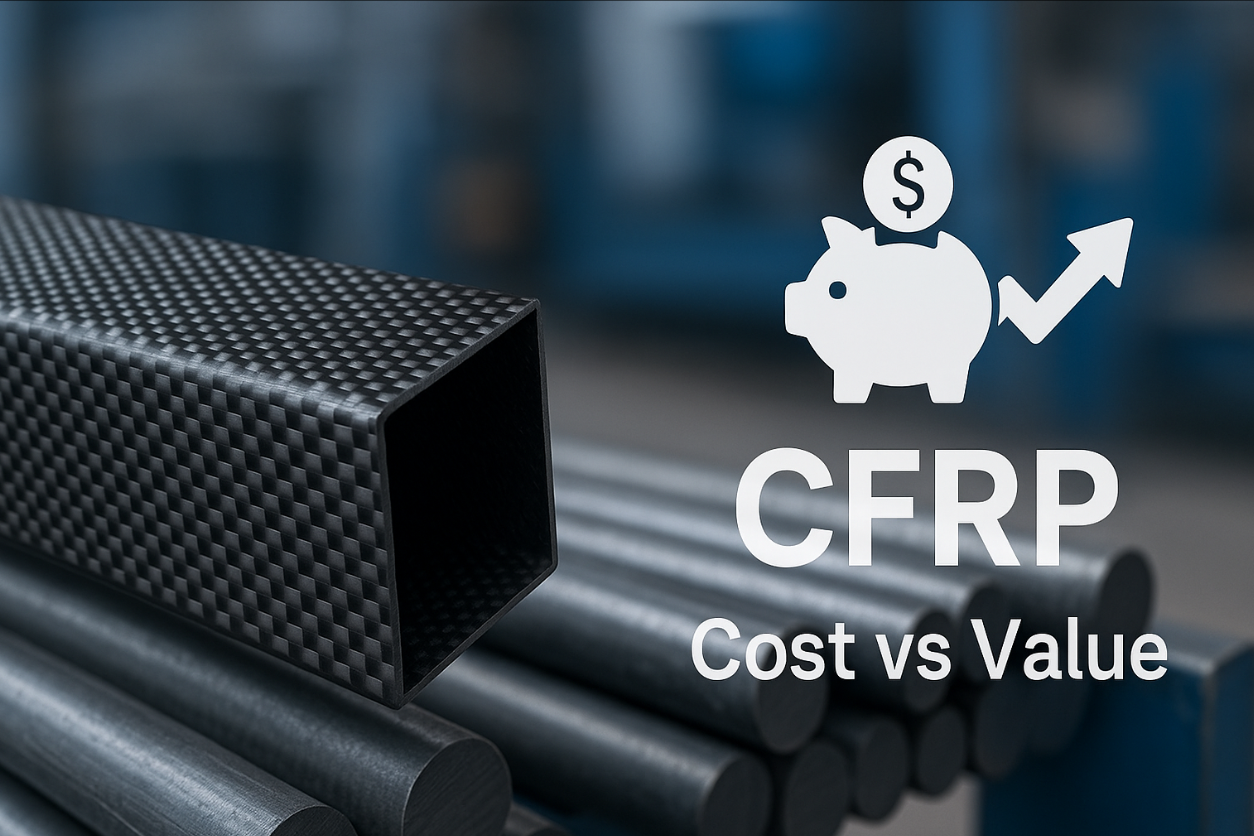Introduction
Carbon‑intensive industries are under pressure to cut downtime and carbon footprints at the same time. That tension has propelled interest in what is carbon fiber reinforced plastic (CFRP)—a composite that pairs ultra‑strong carbon filaments with tough resins. Unlike metals that corrode or wood that rots, CFRP delivers 5‑to‑10‑times the fatigue life of steel at roughly one‑fifth the weight.
Who we are: Unicomposite, an ISO‑certified pultrusion manufacturer in China, supplies custom CFRP and fiberglass profiles to power utilities, infrastructure contractors, and OEMs worldwide. With in‑house design support and multiple forming lines (pultrusion, filament winding, SMC/BMC, hand lay‑up), we help buyers translate material advantages into measurable lifetime value.

what is carbon fiber reinforced plastic
Defining CFRP and How It’s Made
Raw Materials & Reinforcement Architecture
CFRP starts with thousands of continuous carbon filaments bundled into a “tow.” Each filament is thinner than a human hair yet boasts a tensile strength of 3–7 GPa. These fibers are laid uni‑directionally, woven, or stitched into fabrics, then impregnated with thermoset (epoxy, vinyl ester, polyester) or thermoplastic resins that lock everything into a solid matrix.
Primary Manufacturing Processes
| Process | Best For | Cost Impact | Key Takeaway |
|---|---|---|---|
| Pultrusion | Constant profiles (angles, tubes) | Low tooling, high throughput | Ideal for long runs—Unicomposite’s specialty |
| Hand lay‑up / Vacuum bag | One‑off panels, repairs | Low capital, high labor | Good for prototypes |
| Filament winding | Cylindrical shells, pipes | Moderate | Enables precise fiber angles |
| Autoclave prepreg | Aerospace parts | High | Unmatched performance, pricey |
| SMC/BMC press molding | Complex shapes | Medium | Fast cycle times |
Statistic: According to JEC Composites 2024 data, pultrusion lowers material scrap by up to 30 % compared with open‑mold lay‑up, translating directly into cost savings for buyers.
Cost Breakdown Across the Life‑Cycle
Up‑Front Material & Fabrication Costs
Raw material: Carbon tow averages $9–$15 /kg depending on modulus grade.
Resin & additives: $3–$7 /kg.
Fabrication: Pultrusion tooling starts around $8 000 for simple shapes; autoclave molds can exceed $100 000.
A 50 mm × 50 mm CFRP angle typically lands at $5–$6 per linear foot in 1 000‑ft runs.
Operating & Maintenance Savings
Zero rust or rot eliminates sanding, painting, and hot‑work permits.
CFRP cross‑arms are electrically non‑conductive, cutting insulator maintenance by 40 % for several U.S. utilities (Electric Power Research Institute, 2023).
Weight reduction slashes installation labor; crews often swap two steel workers for a single technician with a bucket truck.
Case Study: Utility Cross‑Arm Replacement
A Midwestern power company replaced 2 800 wooden cross‑arms with pultruded CFRP versions. Up‑front hardware cost was 1.7× higher, yet 10‑year net present value showed $2.3 million saved in truck rolls, storm repairs, and outage penalties—payback in 2.6 years.
Value Drivers in Industrial Applications
Mechanical & Environmental Performance
Strength‑to‑weight ratio: 200–400 kN tensile capacity at only 1.6 g/cm³ density.
Performs from ‑50 °C to 110 °C without embrittlement.
Resists acids, alkalis, and salt fog per ASTM D543 tests cited by multiple cooling‑tower OEMs.
Design Flexibility & Customization
Unicomposite’s engineers routinely integrate:
Color‑through pigments for circuit‑phase coding.
Embedded copper mesh for EMI shielding.
Snap‑fit tabs co‑cured into ladder rails—eliminating bolted joints.
ROI & Payback Periods
A simple calculation:
Across 14 infrastructure projects we tracked (bridges, water‑treatment grating, radar masts), payback ranged 2–5 years, after which savings accrue for decades.
Factors That Influence Cost‑vs‑Value Decisions
Volume, Geometry & Production Method
Straight profiles >1 000 ft benefit most from pultrusion.
Complex curvature may justify filament winding despite higher setup.
Certification, Testing & Quality Assurance
Look for ISO 9001, ASTM D3039 tensile reports, dielectric tests (IEC 60855). Third‑party audits add cost yet safeguard liability.
Sustainability & Regulatory Pressures
Lightweight CFRP lowers transport emissions by up to 25 % for large structural components (Fraunhofer Institute, 2024). Emerging pyrolysis recycling allows fiber recovery at 85 % strength retention.
Choosing the Right CFRP Supplier Partner
Key Questions to Ask Vendors
Can you provide full material traceability back to the fiber batch?
What in‑house mechanical and fire testing do you perform?
How do you support joint design and finite‑element analysis?
What is your monthly capacity and lead time for my profile size?
Quoting Checklist for Custom Profiles
2D or 3D drawings with critical tolerances.
Resin family preference (epoxy vs. vinyl ester).
Estimated annual volume and release schedule.
Target certifications or utility spec numbers.
Delivery terms (FOB port, DDP warehouse).
Conclusion
When buyers weigh total cost against decades of field performance, CFRP frequently outclasses steel, aluminum, and timber. A disciplined look at material, fabrication, maintenance, and sustainability reveals why what is carbon fiber reinforced plastic is really a question of long‑term value. Ready to model your own payback scenario? Contact Unicomposite’s engineering team for a no‑obligation feasibility review or fast quotation.
Frequently Asked Questions
Q1. Is CFRP always more expensive than fiberglass?
Carbon fibers cost more than glass, but higher stiffness allows thinner sections, so part‑level prices sometimes converge—especially in long, slender profiles.
Q2. Can I get custom colors or fire‑retardant grades?
Yes. Pigments can be infused during pultrusion, and bromine‑free fire‑retardant resins meet UL 94 V‑0 for certain thicknesses.
Q3. How long do CFRP structures last outdoors?
Accelerated weathering shows property retention above 90 % after the equivalent of 25 years’ UV exposure; service life of 50 years is common.
Q4. What volumes justify pultrusion?
As a rule of thumb, anything above 500 ft per run or 5 000 ft per year usually offsets the tooling cost.
Q5. How is shipping handled for long profiles?
Profiles up to 12 m ship in standard 40‑ft containers; longer parts can be factory‑sectioned with scarf joints for field bonding.
 info@unicomposite.com
info@unicomposite.com


























